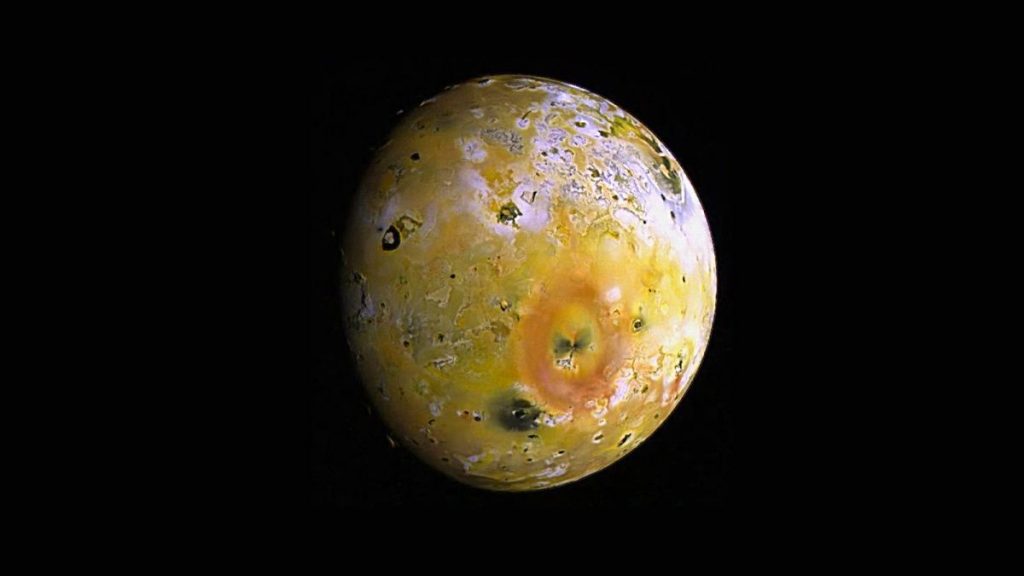
Mysterious dunes on Jupiter’s volcanic moon Io may be formed by lava (Image Credit: Space.com)
Jupiter’s super-volcanic moon boasts grand, meandering dunes created not by wind but by lava flows beneath the moon’s surface, a new study shows.
Io is Jupiter‘s third-largest moon and the innermost of the four large Galilean satellites. It has an icy, yet rolling surface, which has long perplexed scientists. However, using data from NASA’s Galileo spacecraft, scientists have now developed a new explanation of how such dunes may form. The 14-year mission, which explored the Jupiter system from 1995 to 2003, provided images necessary to create the first detailed maps of Jupiter’s moons, which the research team used to better understand the physical processes controlling grain motion on Io.
“Our studies point to the possibility of Io as a new ‘dune world,'” George McDonald, first author of the study and an astronomer at Rutgers University in New Jersey, said in a statement. “We have proposed, and quantitatively tested, a mechanism by which sand grains can move, and in turn dunes could be forming there.”
Related: NASA spacecraft snaps gorgeous new photo of Jupiter’s moons Io and Europa

By nature, dunes are defined as hills or ridges of sand piled up by the wind. However, the moon’s low-density atmosphere means Io’s winds are weak, suggesting its dunes must be formed by some other means.
“This work tells us that the environments in which dunes are found are considerably more varied than the classical, endless desert landscapes on parts of Earth or on the fictional planet Arrakis in ‘Dune,'” McDonald said.
Io is the most volcanically active world in the solar system, sporting hundreds of volcanoes, some of which spew sulfurous plumes hundreds of miles or kilometers high. This amount of volcanic activity creates a varied surface, with a mix of black solidified lava flows and sand, flowing “effusive” lava streams and “snows” of sulfur dioxide.
McDonald and his colleagues used mathematical equations to simulate the force required to move grains on Io and calculated the path those grains would take. The study simulated the movement of a single grain of basalt or frost, revealing that the interaction between flowing lava and sulfur dioxide beneath the moon’s surface creates venting that is dense and fast moving enough to form large dune-like features on the moon’s surface, according to the statement.
Observations from NASA’s Galileo spacecraft support the researchers’ findings, showing that the spacing and height-to-width ratios of Io’s crests are consistent with dunes seen on Earth and other worlds.
“Work like this really allows us to understand how the cosmos works,” Lujendra Ojha, co-author of the study and a planetary scientist at Rutgers, said in the statement. “In the end, in planetary science, that is what we are trying to do.”
Their findings were published April 19 in the journal Nature Communications.
Follow Samantha Mathewson @Sam_Ashley13. Follow us on Twitter @Spacedotcom and on Facebook.





